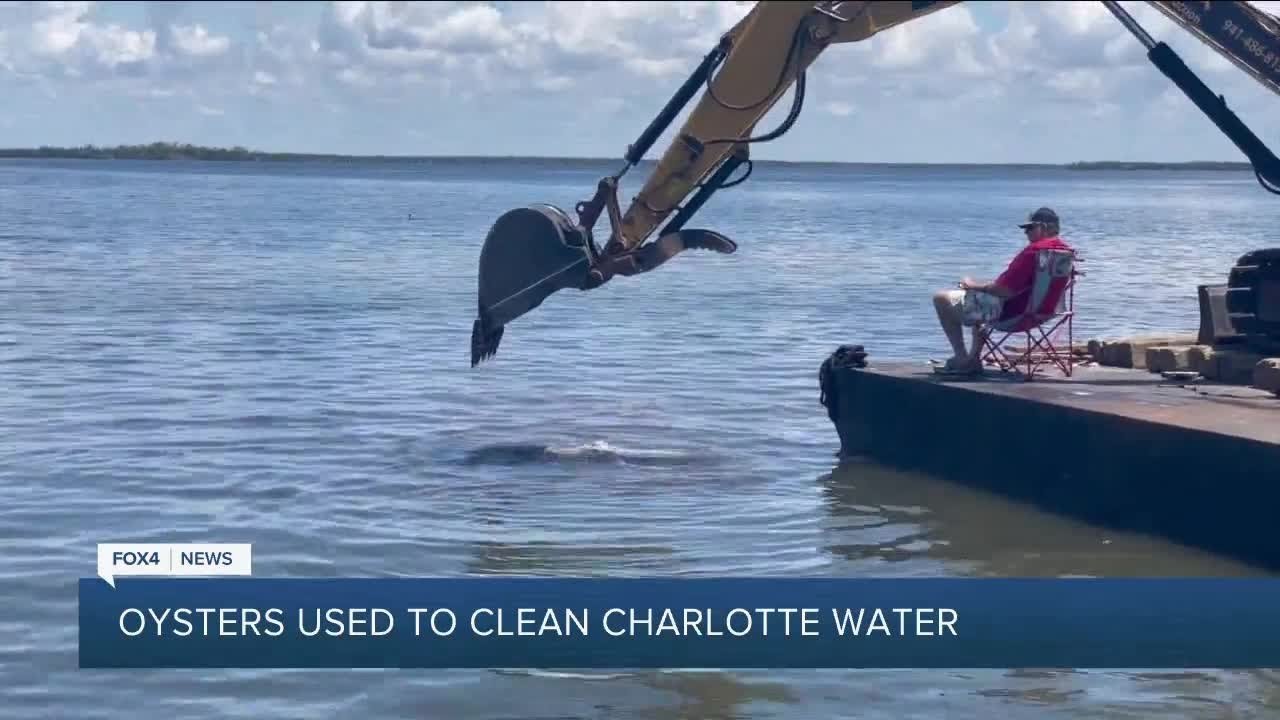Oyster shells are emerging as an innovative solution to combat water pollution in Charlotte Harbor, Florida. The shells are being used to create a filtration system that aids in the removal of excess nitrogen and phosphorus from polluted water. This environmentally friendly approach helps to improve water quality and restore natural marine ecosystems, benefitting both local wildlife and the community. The initiative has shown promising results, paving the way for a sustainable and cost-effective method to tackle harmful algae blooms and preserve water resources.
Oyster shells as a water filtration method
Charlotte Harbor is a beautiful estuary located on the West coast of Florida. It is an important ecological area, home to a variety of marine life, including manatees, dolphins, and sea turtles. However, due to human activities, the water quality in the harbor has deteriorated over the years. Excess nutrient runoff, dredging, and coastal development have all contributed to the degradation of water quality in Charlotte Harbor. As a result, local organizations have been working to restore the health of the estuary, and one such effort involves the use of oyster shells as a water filtration method.
Why oyster shells?
Oyster shells have long been recognized for their ability to purify water. Oysters are filter feeders and can help remove excess nutrients, algae, sediment, and other pollutants from the water. However, oyster populations have declined significantly in many areas due to overfishing, habitat loss, and other factors. Thus, researchers and environmentalists have come up with innovative ways to use oyster shells to clean water.
How oyster shells are used in Charlotte Harbor
The Charlotte Harbor Environmental Center (CHEC) has implemented an oyster restoration project that involves using oyster shells to improve water quality in the area. The project is designed to add new oyster beds to the harbor, which will serve as a natural filtration system for the water.
The first step in the process involves collecting and bagging oyster shells. CHEC collects the shells from restaurants in the area and from people who eat oysters at home. The shells are then transported to a storage site where they are left to dry out for a few weeks.
Once the shells are dried out, they are placed in mesh bags and placed in the water. The bags are secured to stakes and placed in strategic locations throughout the harbor. Over time, the oyster larvae attach themselves to the shells, and the bags become fully functioning oyster beds.
The oysters filter the water in the harbor by removing excess nutrients and other pollutants, and they also provide a habitat for other marine life. The project has been successful in improving water quality in the area, and the oyster beds have become an important part of the local ecosystem.
The impact of oyster shell filtration
Oyster shell filtration has numerous environmental benefits. It helps clean up the water, which can benefit marine life, and it can also improve overall water quality. By removing excess nutrients and pollutants from the water, oyster shells can also help prevent harmful algal blooms, which can have a negative impact on marine life and human health.
Additionally, oyster restoration projects can help create jobs and boost local economies. Collecting and processing oyster shells can provide employment opportunities for local residents, and the restoration of oyster beds can also provide recreational opportunities for people who enjoy fishing or other water-based activities.
The future of oyster shell filtration
The use of oyster shells as a water filtration method is gaining popularity around the world. Oyster restoration projects have been implemented in locations ranging from the Chesapeake Bay to the Gulf of Mexico, and many experts believe that this method of water filtration has great potential for improving water quality in a variety of settings.
Moving forward, it will be important to continue research on the effectiveness of oyster shell filtration and to develop new methods for implementing this technique. Additionally, it will be important to continue to educate the public about the benefits of oyster shell filtration and to encourage individuals, businesses, and communities to participate in oyster restoration projects.
Conclusion
The use of oyster shells as a water filtration method is a promising solution for improving water quality in Charlotte Harbor and other waterways around the world. By creating new oyster beds and restoring existing ones, we can help create a healthier environment for marine life, improve water quality, and boost local economies. With continued research and education, we can ensure that oyster shell filtration remains a vital tool in the fight to protect our water resources.




































